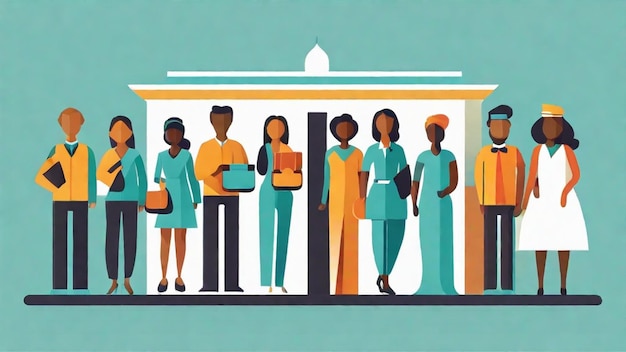New Federal Program: Access Free Legal Aid for Low-Income Families

The new federal program aims to provide free legal aid resources for low-income individuals and families, ensuring access to justice regardless of financial status.
Navigating the legal system can be daunting, especially for low-income individuals and families. Fortunately, a new federal program is emerging to offer free legal aid resources, aiming to bridge the justice gap and provide crucial support to those who need it most.
Understanding the Urgent Need for Free Legal Aid
Access to justice is a fundamental right, but it remains out of reach for many low-income individuals and families across the United States. Understanding the barriers they face highlights the significance of accessible legal support.
The challenges are multifaceted, ranging from a lack of awareness about available resources to the inability to afford legal representation. This often results in people navigating complex legal issues without guidance, leading to unfavorable outcomes.
The Justice Gap: A Harsh Reality
The “justice gap” refers to the disparity between the legal needs of low-income individuals and the resources available to meet those needs. Studies consistently show that a significant percentage of low-income households experience legal issues each year, but only a fraction receive adequate legal assistance.
Why Affordable Legal Help Matters
Access to legal aid can make a profound difference in various areas of life, including housing, employment, family law, and consumer protection. Without it, individuals may face evictions, wrongful terminations, custody battles, and unfair debt collection practices. These outcomes can have long-lasting consequences, perpetuating cycles of poverty and inequality.

Without accessible legal resources, low-income communities face systemic disadvantages that affect their ability to thrive. Addressing the justice gap is not just a matter of fairness; it’s essential for building a more equitable society where everyone has the opportunity to succeed.
Conclusion: The implementation of free legal aid resources is crucial for addressing the justice gap and ensuring that low-income individuals and families have equal access to legal representation.
Introducing the New Federal Program
In response to the pressing need for accessible legal aid, a new federal program has been established to provide free legal resources for low-income individuals and families. This initiative aims to remove financial barriers and ensure equal access to justice.
The program is designed to offer a comprehensive range of legal services, including legal advice, representation, and assistance with navigating the legal system. It targets those who cannot afford legal assistance, ensuring they receive the support needed to address their legal challenges effectively.
Key Features and Benefits
Here are some of the key features and benefits of this new federal program:
- Free Legal Advice: Individuals can receive guidance and advice on their legal issues from qualified attorneys.
- Legal Representation: The program provides representation in court for eligible individuals and families.
- Assistance with Legal Paperwork: Help is available to complete and file legal documents accurately.
- Referrals to Additional Resources: Individuals are connected to other relevant services and support networks.
Eligibility Criteria
Eligibility for the program is based on income and household size. Generally, individuals and families with incomes below a certain threshold, as defined by federal guidelines, can qualify for assistance. Specific eligibility criteria may vary by location and the type of legal service needed. Additionally, certain types of cases, such as criminal cases where the right to counsel is constitutionally guaranteed, may have different eligibility standards.
To ensure the program effectively reaches those who need it most, outreach efforts are being conducted in low-income communities. These efforts involve partnerships with local organizations, community centers, and social service agencies to raise awareness and facilitate access to the program.
Conclusion: This new federal program represents a significant step towards ensuring that low-income individuals and families have access to the legal resources they need, promoting fairness and equity within the justice system.
Areas of Law Covered by the Program
The new federal program offers support across a broad spectrum of legal issues that commonly affect low-income individuals and families. This comprehensive approach ensures that people can access assistance for a variety of legal challenges they may face.
From housing and family law to employment and consumer protection, the program is designed to address the diverse legal needs of the target population. By covering these key areas, it provides a vital safety net for those who would otherwise struggle to navigate the legal system.
Housing Law
Housing issues are a significant concern for low-income individuals and families. The program provides legal assistance in cases involving:
- Evictions: Preventing wrongful evictions and ensuring tenants’ rights are protected.
- Landlord-Tenant Disputes: Resolving conflicts over rent, repairs, and lease agreements.
- Subsidized Housing: Assistance with accessing and maintaining subsidized housing benefits.
Family Law
Family law matters can be emotionally and financially challenging. The program offers support in cases involving:
- Divorce and Separation: Providing legal representation during divorce proceedings.
- Child Custody and Support: Assisting with child custody arrangements and child support orders.
- Domestic Violence: Offering legal protection and support to victims of domestic violence.

Employment Law
Employment-related legal issues can impact a person’s livelihood. The program assists with matters such as:
- Wrongful Termination: Protecting employees from unlawful job terminations.
- Wage and Hour Disputes: Ensuring workers receive fair wages and overtime pay.
- Discrimination: Addressing workplace discrimination based on race, gender, or other protected characteristics.
Consumer Protection
Consumer protection is crucial for safeguarding low-income individuals from fraud and exploitation. The program helps with issues such as:
- Debt Collection: Protecting individuals from abusive debt collection practices.
- Predatory Lending: Combating unfair and deceptive lending practices.
- Identity Theft: Assisting victims of identity theft in recovering their financial security.
Conclusion: By addressing a wide range of legal issues, the new federal program aims to provide comprehensive support to low-income individuals and families, empowering them to overcome legal challenges and improve their lives.
How to Apply for Assistance
Accessing the free legal aid resources offered by the new federal program is designed to be straightforward and accessible. Understanding the application process and required documentation can help individuals and families navigate the system more effectively.
The application process typically involves several steps, from gathering necessary documents to submitting the application and attending an intake interview. By following these steps carefully, applicants can increase their chances of receiving the legal assistance they need.
Step-by-Step Application Process
Here’s a detailed overview of the application process:
- Gather Required Documents: Collect all necessary documents, such as proof of income, identification, and any relevant legal paperwork.
- Complete the Application Form: Fill out the application form accurately and completely. Application forms can usually be found online on the program’s website or obtained from local legal aid offices.
- Submit the Application: Submit the completed application form and supporting documents to the designated office or online portal.
- Attend an Intake Interview: Schedule and attend an intake interview with a program representative. During the interview, you will discuss your legal issue and confirm your eligibility for assistance.
- Receive Notification: Await notification of the application’s outcome. If approved, you will be assigned a legal representative or provided with the necessary resources.
Required Documentation
Typically, applicants will need to provide the following documents:
- Proof of Income: Pay stubs, tax returns, or other documentation verifying income.
- Identification: A valid photo ID, such as a driver’s license or passport.
- Legal Documents: Any relevant legal paperwork related to the case, such as contracts, leases, or court filings.
Common Mistakes to Avoid
To ensure a smooth application process, avoid these common mistakes:
- Incomplete Application: Ensure all sections of the application form are filled out accurately.
- Missing Documents: Provide all required documents to avoid delays in processing the application.
- Inaccurate Information: Double-check all information provided to ensure accuracy.
Conclusion: By understanding the application process, gathering the necessary documents, and avoiding common mistakes, individuals and families can successfully apply for free legal aid resources and access the support they need.
Success Stories: The Impact of Free Legal Aid
The new federal program has already begun to make a positive impact on the lives of low-income individuals and families. Hearing real-life success stories illustrates the profound difference that access to free legal aid can make.
These stories highlight how the program has helped people overcome legal challenges, secure their rights, and improve their overall well-being. They serve as a testament to the importance of providing accessible legal resources to those who need them most.
Case Study 1: Preventing Wrongful Eviction
Maria, a single mother of two, faced eviction after falling behind on rent due to a temporary job loss. With the help of the new federal program, she was able to access legal representation. The attorney successfully negotiated with the landlord, allowing Maria to remain in her home and avoid homelessness. This support not only stabilized Maria’s housing situation but also provided her children with a sense of security.
Case Study 2: Securing Fair Wages
John, a construction worker, was not being paid the prevailing wage required by law for a public works project. He contacted the new federal program and received legal assistance to file a wage claim. The program’s attorneys successfully recovered the back wages owed to John, ensuring he received fair compensation for his work. This outcome significantly improved John’s financial stability and allowed him to support his family.
Case Study 3: Obtaining Child Custody
Sarah, a domestic violence survivor, sought custody of her children after leaving an abusive relationship. The program provided her with legal representation, helping her navigate the complex family court system. With the support of her attorney, Sarah obtained a custody order that protected her children and provided them with a safe and stable environment. This legal intervention was crucial in ensuring the well-being of Sarah and her children.
Conclusion: These success stories demonstrate the tangible benefits of the new federal program, underscoring the importance of providing free legal aid resources to low-income individuals and families. By offering legal support, the program empowers people to overcome challenges and build brighter futures.
How to Support and Contribute to the Program
Sustaining and expanding the reach of the new federal program requires ongoing support from various sources. There are several ways individuals and organizations can contribute to the program and help ensure its continued success.
From volunteering time and donating resources to raising awareness and advocating for policy changes, there are many opportunities to make a difference. By working together, we can help ensure that everyone has access to justice, regardless of their financial situation.
Volunteer Opportunities
Volunteering is a valuable way to contribute to the program. Opportunities include:
- Providing pro bono legal services: Attorneys can offer their expertise to represent clients.
- Assisting with administrative tasks: Volunteers can help with tasks such as data entry and client intake.
- Conducting community outreach: Volunteers can assist with raising awareness about the program.
Financial Contributions
Financial donations are essential for supporting the program’s operations. Donations can be used to:
- Fund legal services: Provide resources for attorneys and legal staff.
- Cover administrative costs: Support the program’s day-to-day operations.
- Expand program reach: Enable the program to serve more individuals and families.
Advocacy and Awareness
Raising awareness about the program and advocating for policy changes can help ensure its long-term sustainability. Ways to get involved include:
- Sharing information: Spread the word about the program through social media and community events.
- Contacting elected officials: Advocate for increased funding and support for legal aid.
- Supporting legal aid organizations: Partner with local organizations to support their efforts.
Conclusion: By volunteering, donating, or advocating for the program, individuals and organizations can play a vital role in ensuring that low-income individuals and families have access to the legal resources they need.
| Key Point | Brief Description |
|---|---|
| ⚖️ Free Legal Aid | Program offers free legal resources to low-income individuals and families. |
| 🏠 Areas Covered | Includes housing, family, employment, and consumer protection law. |
| 📝 Application | Involves gathering documents, completing forms, and attending an interview. |
| 🤝 Support Needed | Volunteers and financial contributions are essential. |
Frequently Asked Questions
▼
Eligibility is typically based on income and household size. Generally, individuals and families with incomes below a certain threshold, as defined by federal guidelines, can qualify for assistance.
▼
The program covers a wide range of legal issues, including housing, family law, employment, and consumer protection. This comprehensive approach ensures that people can access assistance for various legal challenges.
▼
The application process typically involves gathering required documents, completing an application form, submitting the form, and attending an intake interview. Specific steps may vary, so checking the program’s website or contacting them directly is advisable.
▼
Commonly required documents include proof of income (such as pay stubs or tax returns), a valid photo ID, and any relevant legal documents related to your case.
▼
You can support the program through volunteering, financial donations, and advocacy efforts. Volunteering may involve providing legal services or helping with administrative tasks, while donations help fund legal services and cover operational costs.
Conclusion
The new federal program offering free legal aid resources represents a vital step towards bridging the justice gap for low-income individuals and families in the US. By providing access to legal advice, representation, and assistance, this initiative aims to empower those who need it most, ensuring fairness and equality within the legal system.





